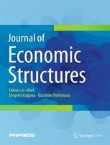Efficiency, and economies of scale and scope in Japanese agricultural cooperatives
The purpose of this study is to investigate regional differences in the business characteristics of Japanese agricultural cooperatives (JAs), which have been widely criticized for depending on non-agricultural...
